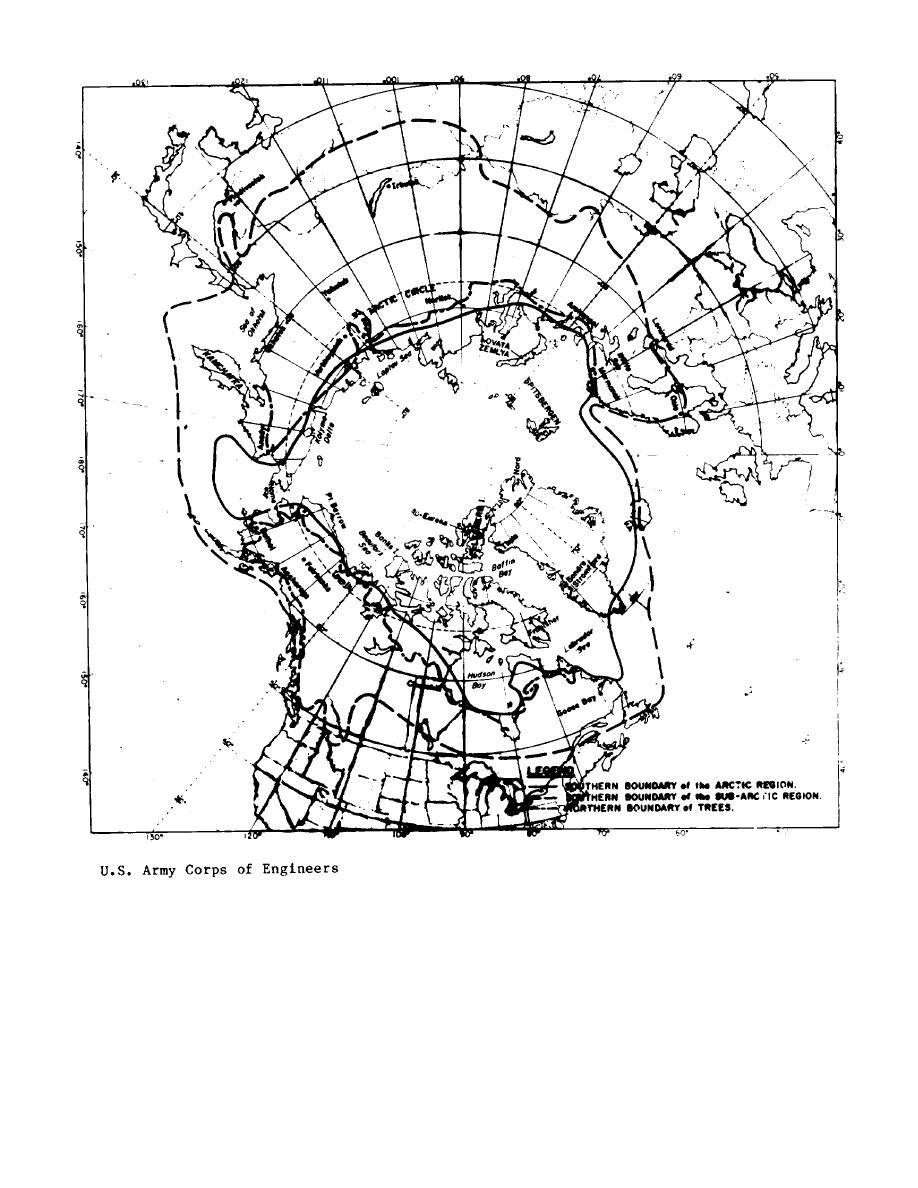
TM 5-852-1/AFR 88-19, Volume 1
Figure 2-1. Northern cold regions: polar limits and zones.
landing areas and as smooth, obstruction-free surfaces
many variables such as ice thickness, temperature and
for tractor-trains and other forms of surface
quality; snow cover; type, speed, spacing and number of
transportation. Ice may be between 4 and 8 feet thick
repetitions of moving loads; length of time of stationary
approximately between 1 April and 1 June and may
loading; depth of water; presence of open cracks or
remain capable of carrying loads for as many as 3 weeks
zones of pressure buckling; and presence of springs,
after the start of surface thaw before becoming unsafe.
seepage inflow and currents. There is an approximate
Then there is another period of up to several weeks
boundary between failure and safety for these conditions.
when the water body cannot be used for any form of
For example, to ensure safe movement of single
transportation until the ice has melted or broken up and
vehicles crossing freshwater (lake or river) ice at
disappeared.
Ice bearing capacity is affected by
temperatures
below
32F,
the
formula
P
2-2



 Previous Page
Previous Page
